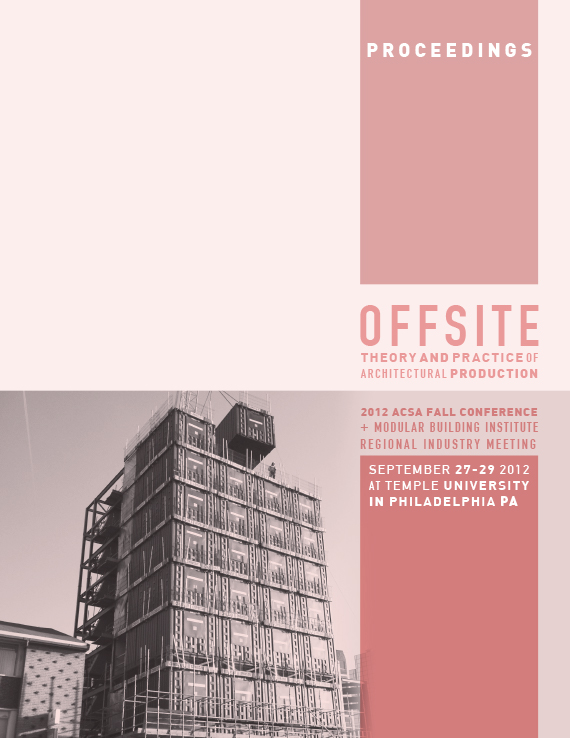Author(s): Dana Gulling
As architects and designers promote mass customization for off-site construction, they need to recognize that mass customization is not cost neutral. The increased costs are both financial and environmental. There are some financial benefits to mass customization (e.g. increased customer loyalty, lower marketing costs, and lower product research costs1); however mass customization does increase the monetary cost of production. The higher prices are often passed onto the consumer. Secondly, mass customization may increase environmental costs through increased production wastes. This is especially demonstrated by computer-aided manufacturing (CAM) equipment that is subtractive—such as computer numerical controlled (CNC) routers, electronic discharge machines (EDM) and water jet cutters. Waste for these processes can be significant and, depending upon the material and process, unrecyclable. In recent years, mass customization and the associated CAM technologies have transformed offsite construction; however they have not transformed all of building component manufacturing. There are still a number of traditional manufacturing processes that rely on the repetitive use of expensive molds for high production runs. The repetitive use of the mold for these processes is necessary as it distributes the mold’s cost over a large number of products. If architects want to customize these traditional manufacturing processes, they will need to design elements that will be used repeatedly throughout their project. I am proposing the term customized repetitive manufacturing to refer to this type of work. Customized repetitive manufacturing is a necessary alternative to mass customization for some manufacturing. Customized repetitive manufacturing allows for some customization from the designer, while balancing the need for repetition. Simultaneously, it places more restrictions on the designer than mass customization, because each element needs to be repeated a particular number of times in order to remain cost effective. There are architects that illustrate customized repetitive manufacturing in some of their buildings. Examples include Carlos Jimenez’s Data Service Building at Rice University (2007) and AlejandroVillarreal’s Hesiodo in Mexico City (2005). This work illustrates the flexibility and yet restrictions of designing within traditional manufacturing processes. This paper will investigate existing studies and literature that examine the processes, benefits, and costs of CAM equipment typically used for mass customization and compare that to traditional manufacturing processes for customized repetitive manufacturing. It is my assertion that CAM is a strong choice for some manufacturing processes, however for other manufacturing processes repetition is needed to reduce costs—both monetary and environmental. In these cases, the architect or the designer should consider customized repetitive manufacturing. This paper will propose a selection of up to 5 fabrication processes that would be better to select CAM technologies for production and an equal number in which traditional manufacturing processes are a better choice. This will help offer designers and architects more knowledge to choose the best process for their off-site manufacturing needs.
Volume Editors
John Quale, Rashida Ng & Ryan E. Smith
ISBN
978-0-935502-85-5

 Study Architecture
Study Architecture  ProPEL
ProPEL 
